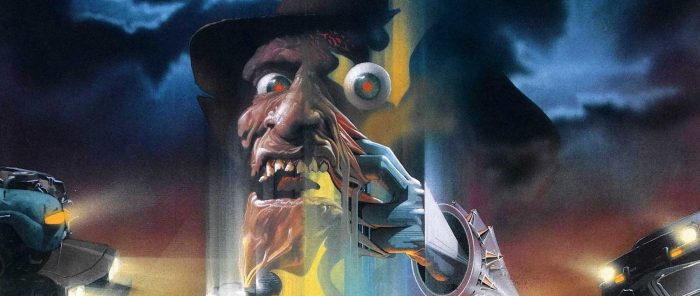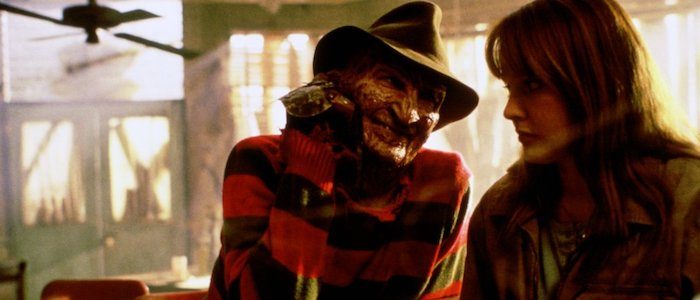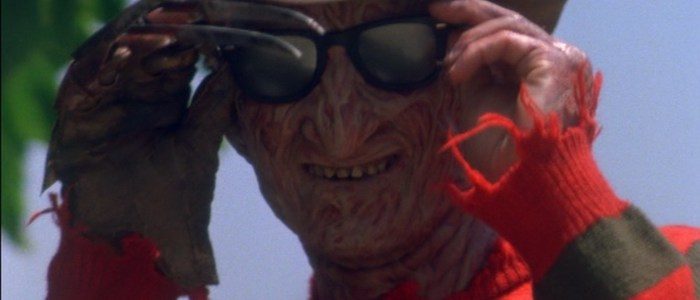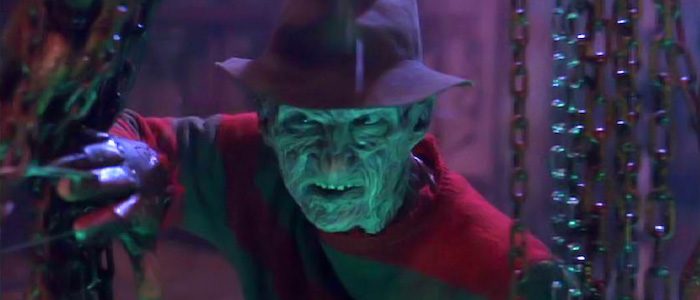
A Nightmare on Elm Street 4: The Dream Master is one of the high points for the horror franchise and filmmaker Renny Harlin. The sequel stands the test of time thanks to imaginative dream sequences and practical effects that only look better with age, a Freddy Kruger movie that takes full advantage of the infinite possibilities of a dreamscape.
And although the 1988 picture changed Harlin’s life, he was always in fear while making it.
The Dream Master was only Harlin’s third movie, his follow-up to his now cult-classic horror film, Prison, which gave Viggo Mortensen one of his earliest starring roles. While Harlin talked to us about his new comedic crime caper, The Misfits, he recalled his roller coaster experience of directing the horror sequel.

The Man to Make the Movie
“It was an exceptional situation how I got that job,” he said. “It was literally because I was so persistent. I kept going back to New Line Cinema saying, ‘You have to hire me to do this movie.’ There was no script. There was a blueprint of a script, but no real script. Then, the writers’ strike started. They couldn’t hire a writer. They had a schedule for release. It needed to be made. I happened to be in the right place at the right time. I convinced them, no matter there’s a script or no script, I’m the man to make this movie.”
Although Harlin is most famous for his action films, such as Cliffhanger and The Long Kiss Goodnight, he first cut his teeth on horror movies. One of his earliest Hollywood gigs was for a production company where he had to, in his own words, sadly cut gore out of movies. Legend has it that he even cut violence out of Sam Raimi’s Evil Dead.
Once Harlin landed the gig for The Dream Master, he let his imagination run wild. “I had a crazy imagination and nightmares all my life since I was a kid,” he said. “Whether it was characters stuck in a pizza or a woman in a waterbed, these were things I had seen in my crazy nightmares. I remember when the [New Line] executive Bob Shaye, who won Oscars for Lord of the Rings, looked at the storyboards and said, ‘What? The kids’ faces are in a pizza? What are you talking about?’ I just said, ‘Yeah. It’ll be awesome.’ Somehow, there was no better choice at that point, so that’s how I got that job.”
Even when the job started, Harlin didn’t have a completed script, although Academy Award-winning Brian Helgeland (Mystic River) did rewrite an early draft.
“The script was written on a daily basis with the producers, Mike De Luca and Rachel Talalay,” Harlin said. “We’d get up before we started shooting, write storylines and dialogue, and do the same at lunchtime. Many times the actors didn’t have the pages until lunch. This was how it was written on the run.”

The James Bond of Horror
By this point in Harlin’s career, he had only been in America for three years, which included brief mentorship from filmmaker Walter Hill (The Warriors). Despite being fairly new to the States, Harlin was confident in making a horror sequel reflective of American pop culture. “I had been living, eating, and drinking American pop culture all my life,” he said. “Now, with three years there, I felt it. I was pretty young and in my late-20s, so I felt a part of that culture and time. I felt I knew what kids were doing, thinking, and the music they were listening to. It came naturally to me.”
In addition to making The Dream Master in tune with the times, Harlin knew the sequel needed a fresh perspective. “I said, ‘This is the fourth movie of the franchise,'” Harlin added. “We can’t really pretend that audience doesn’t really know what’s going on. We can’t just make it scary and expect the audience to just buy into it. It’s so much a part of the culture already, so we have to twist it.”
To twist it, the director looked to one of the longest-running franchises of all time for inspiration. “‘Let’s make Freddy the James Bond of horror,'” he said. “He had to be bigger than life, kind of like a hero even though he’s the bad guy. We have to introduce humor and wink at the audience, like, ‘We know you know, so let’s go and have fun.’ That was the biggest thing Bob Shaye was worried about. Now, you look at the film and think, ‘Why didn’t everyone realize it was going to work?’ They didn’t. I wasn’t so sure, either.”
Shaye wasn’t the only one nervous, though. “At that point, this was New Line’s big franchise,” Harlin said. “Bob Shaye never spoke to me during the whole making of the movie. He’d just be on the set and look really angry and frustrated in the background. I was scared. I felt like I was pretending I knew what I was doing, although I thought I knew what I was doing. Still, I thought one of these days they’ll say, ‘He’s just a kid from Finland. What does he know?'”

The Biggest Relief
Harlin’s instincts were proven correct when the sequel became not only the highest grossest entry in the original franchise but also one of the most imaginative. The nightmare sequences are unforgettable, such as the woman in the waterbed, the bug transformation, and the “suck face” effect.
However, it wasn’t until an audience finally saw the sequel that Harlin’s own nightmares were put to rest. The director fondly recalled the first Dream Master test screening in West Hollywood. “We went there very nervous with our hearts beating out of our chests,” he said. “At that test screening, when the audience started applauding, screaming, and laughing, Bob Shaye looked at me, like, ‘Oh my God. I think you were right.’ We got a standing ovation. It was the biggest relief.”
Harlin is all smiles when he reminisces about this movie. Similar to fans of the franchise, he has a fondness for A Nightmare on Elm Street 4: The Dream Master, and for good reason. “It changed my life,” Harlin concluded. “It just goes to show you can never be sure. You might think you have something genius, and the audience won’t like it. Sometimes you’re like, ‘What have we done?’ but the audience likes it. Somehow, with the style of the movie, the humor, and the music, we hit that time perfectly. It worked.”
The post Director Renny Harlin Revisits ‘A Nightmare on Elm Street 4’ – “Why Didn’t Everyone Realize It Was Going to Work?” appeared first on /Film.
0 Comments